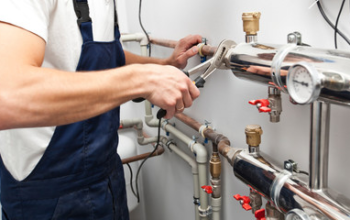There are several types of Gaslines: transmission lines, distribution lines, and gathering lines. The latter is used to transport large amounts of gas from one point to another. Natural gas transmission lines carry crude oil and other petroleum products to refineries, and other types of gas are transported to consumers via distribution lines. Most of the transmission lines are underground. Distribution lines transport gas to industrial customers, while smaller distribution lines carry the gas to homes. Both types of lines are typically installed in underground utility easements. Gas pipeline commodities include natural gas, propane, hydrogen, and synthetic gas. Natural gas is the most common gas pipeline commodity, while propane, hydrogen, and synthetic gas are also used in transmission lines.
Natural gas pipelines transport natural gas through the interior area. Most transmission pipelines are designed to carry gas at higher pressures than needed, but they rarely operate at full capacity. To make up for this, many transmission pipelines are looped, allowing them to expand capacity. Redundancy, however, is necessary during peak demand periods when natural gas supplies are at their highest.
Natural gas and propane are commonly used to heat homes. Natural gas and propane are often used in ovens and water heaters, which are both powered by fire. Therefore, gas and water lines are very dangerous. If you smell or see a gas smell, it is a good idea to contact a professional to repair or replace it. The risks of a gas leak are high and can cause a fire. As with any plumbing issue, you should have a professional inspect your home for safety purposes.
Natural gas passes through a pressure regulator before reaching a customer’s meter. Some service lines carry gas at very low pressure. For example, household natural gas is under pressure about a child blowing bubbles through a milk bottle. The pressure is only slightly higher than the air. As the gas flows through the burner, it ignites in a familiar blue flame. With the right pressure, it is possible to safely use the gas. It is important to keep the pressure below the design pressure.
While it is true that pipelines provide a vital service for the energy industry, natural gas often comes from remote regions and far from areas of high demand. This is why transportation is so important in the natural gas industry. However, the importance of pipelines cannot be overstated. The transportation of natural gas will continue as long as the weather continues to improve. So, be sure to keep your pipelines and natural gas supply lines in check and well-maintained.
Accurate predictions of gas flow rate are crucial to the efficient operation of transmission pipelines. Flow rate can vary significantly from time to time, and accurate mathematical models are needed to calculate this. The flow rate of a pipeline depends on the transient design checking and load factor. A steady-state model is commonly used to design pipelines. Flow rates and line packs are calculated based on this model. It is critical to understand the effects of different operating conditions in pipelines in order to avoid catastrophic failure.
Construction costs are not low for a natural gas pipeline. It may cost up to $70 million to build a pipeline. The annual operating cost for this project is about $6 million. The construction costs will depend on the number of existing pipelines and the total amount of new piping. The construction and operation costs of these pipelines will determine the total cost of gas piping. So, how do you calculate the cost? One way is to consider the length of time the pipeline will be in operation. If it is too long, it may cost you an additional $6 million a year.
The main problem for natural gas pipelines is hydrate formation. Flows can be calculated as a function of time, temperature, and other variables. The pipeline gas flow can be described by nonlinear algebraic equations. These equations can be simplified and interpreted from an optimization perspective. This makes the optimization of the natural gas pipeline network more straightforward. In addition, the steady-state flow can be compared with a steady-state model.
Natural gas pipelines often have faulty components. When they fail, natural gas can spill, causing damage. Because of the volatile nature of natural gas, spills can result in explosions. One recent pipeline explosion left ten people injured and dozens of homes evacuated. The pipeline explosion killed six people, destroyed 38 homes, and exposed shoddy construction and inspection practices. As a result, pipelines are often the source of many accidents and other disasters.


